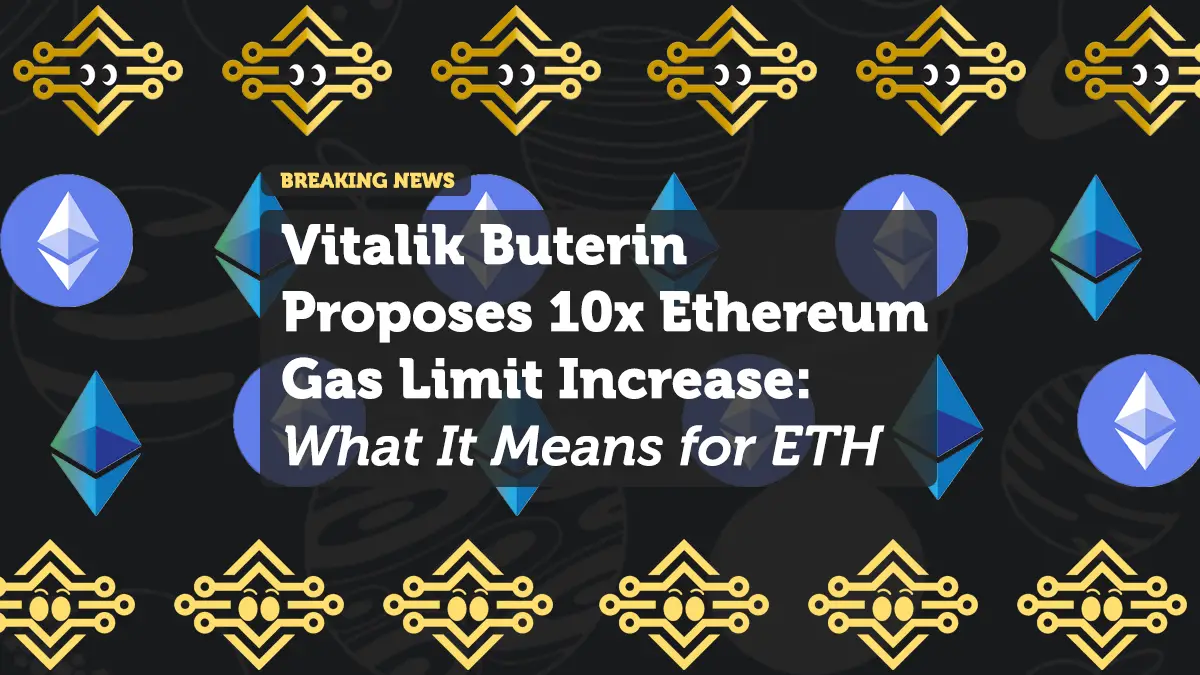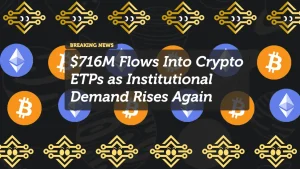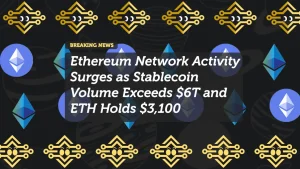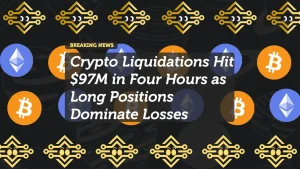
Vitalik Buterin Proposes 10x Ethereum Gas Limit Increase: What It Means for ETH
Ethereum co-founder Vitalik Buterin has put forward a bold proposal—a 10x increase in the Ethereum gas limit. This move could revolutionize Ethereum’s transaction speeds and costs, but it also comes with technical and economic challenges.
Here’s what you need to know.
1. What is Ethereum’s Gas Limit?
The gas limit determines the maximum amount of computational work that can be included in a single block. Gas is Ethereum’s unit for measuring the cost of transactions and smart contract execution.
Currently, Ethereum processes ~30 million gas per block, but Buterin suggests increasing this by 10 times, allowing for more transactions and operations per block.
Potential benefits include:
✅ Lower transaction fees due to reduced congestion.
✅ Faster network throughput as more transactions get processed.
✅ Better dApp performance, enabling more complex smart contracts.
2. How Would a Higher Gas Limit Impact Ethereum?
Lower Gas Fees
A higher gas limit could significantly reduce Ethereum transaction fees, as more transactions fit into each block. This would be particularly beneficial for NFT traders, DeFi users, and developers who rely on frequent transactions.
However, lower fees are not guaranteed. If network demand rises equally, transaction costs might remain unchanged.
Increased Network Capacity
By increasing block size, Ethereum could process more transactions per second (TPS). This would make Ethereum more competitive with high-speed chains like Solana and Avalanche.
Challenges and Risks
Longer Block Times
Larger blocks take more time to validate, which could slow down block propagation, potentially impacting finality.
Centralization Risks
Higher gas limits could make running an Ethereum node more resource-intensive, discouraging smaller validators and making Ethereum more centralized among those with high computing power.
Security & Stability
The Ethereum network is designed for stability and decentralization. A sudden gas limit increase could introduce unintended security risks or destabilize network performance.
3. How the Community Reacted to Buterin’s Proposal
Ethereum developers and users have had mixed reactions to this idea.
Supporters Say:
✅ “A 10x gas limit increase is the fastest way to scale Ethereum without waiting for Layer 2 adoption.”
✅ “Lower fees will help Ethereum stay competitive against other blockchains.”
Critics Argue:
❌ “Increased gas limits could lead to blockchain bloat and make Ethereum harder to run for small validators.”
❌ “Ethereum’s focus should be on Layer 2 scaling solutions rather than pushing for bigger blocks.”
4. How Could This Be Implemented?
Network Upgrade or Hard Fork?
If there is broad consensus, the gas limit increase could be implemented as an Ethereum Improvement Proposal (EIP) and rolled out in a future upgrade. However, drastic changes like this often require significant testing and debate.
Could It Be Phased In?
Instead of a sudden 10x jump, Ethereum developers might consider gradually increasing the gas limit over multiple network upgrades.
Layer 2 Scaling as an Alternative
Some argue that solutions like Optimism, Arbitrum, and zk-Rollups provide better scaling solutions than modifying the base layer. However, Buterin’s proposal suggests short-term relief while Ethereum’s Layer 2 ecosystem continues to develop.
5. What’s Next for Ethereum?
Ethereum is already moving toward major network improvements, including:
The Pectra Upgrade (March 2025): Expected to improve staking efficiency and network performance.
Layer 2 Adoption: Rollups like zkSync and Arbitrum are designed to scale Ethereum without altering its gas limits.
Ethereum 2.0’s Future Developments: While Ethereum has transitioned to Proof-of-Stake, further optimizations like sharding are still on the roadmap.
Could Buterin’s gas limit increase be a temporary fix before these long-term solutions take full effect?
Final Thoughts: Should Ethereum Increase Its Gas Limit?
Pros:
✅ Faster transaction speeds
✅ Lower fees (if demand doesn’t increase equally)
✅ Improved dApp usability
Cons:
❌ Higher computational costs for validators
❌ Possible network congestion if block times increase
❌ Increased centralization risks
Vitalik Buterin’s 10x gas limit proposal presents an exciting but controversial path for Ethereum. While it could temporarily relieve congestion, the long-term impact on decentralization and security must be carefully considered.
What do you think? Should Ethereum increase its gas limit? Share your thoughts in the comments!
















